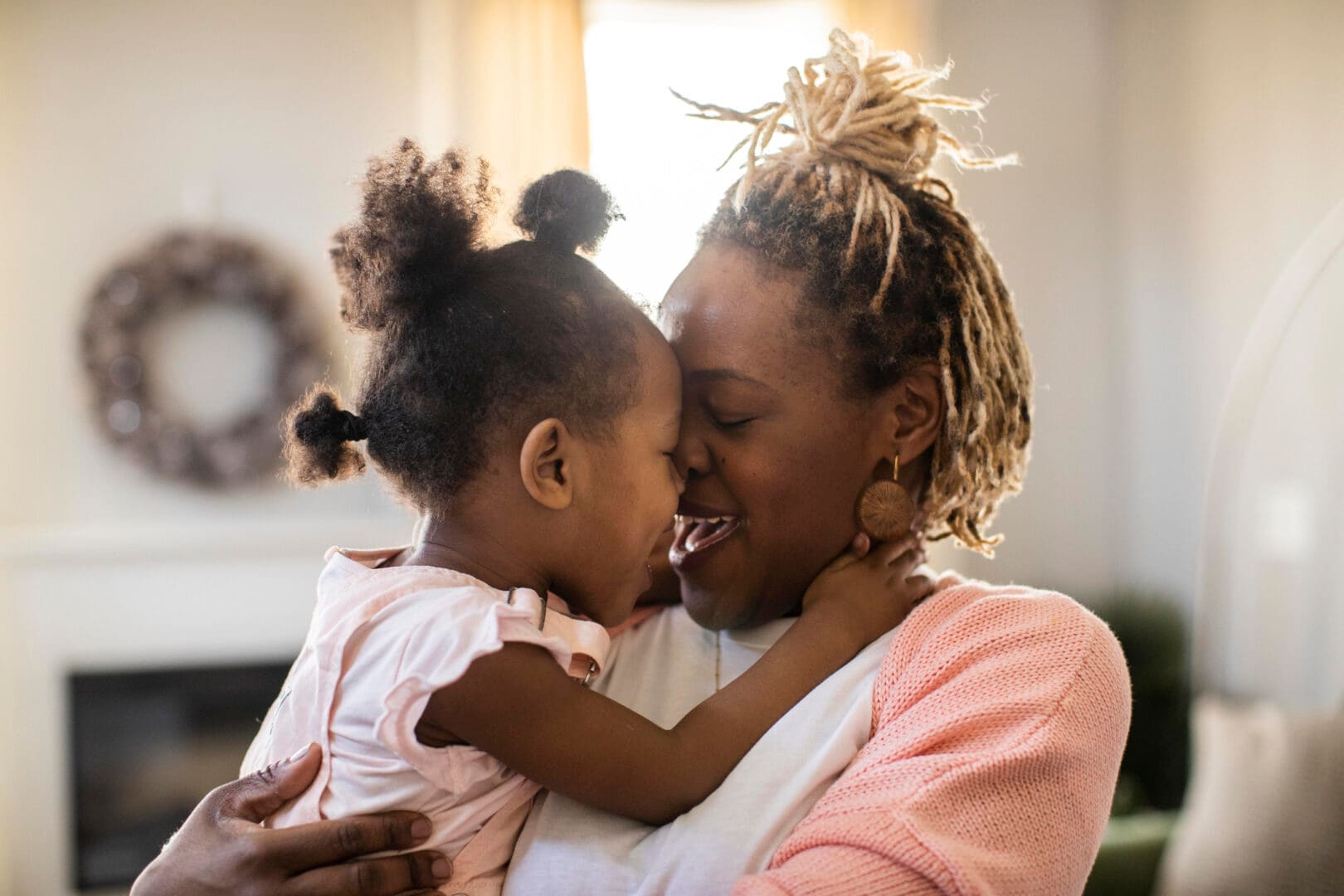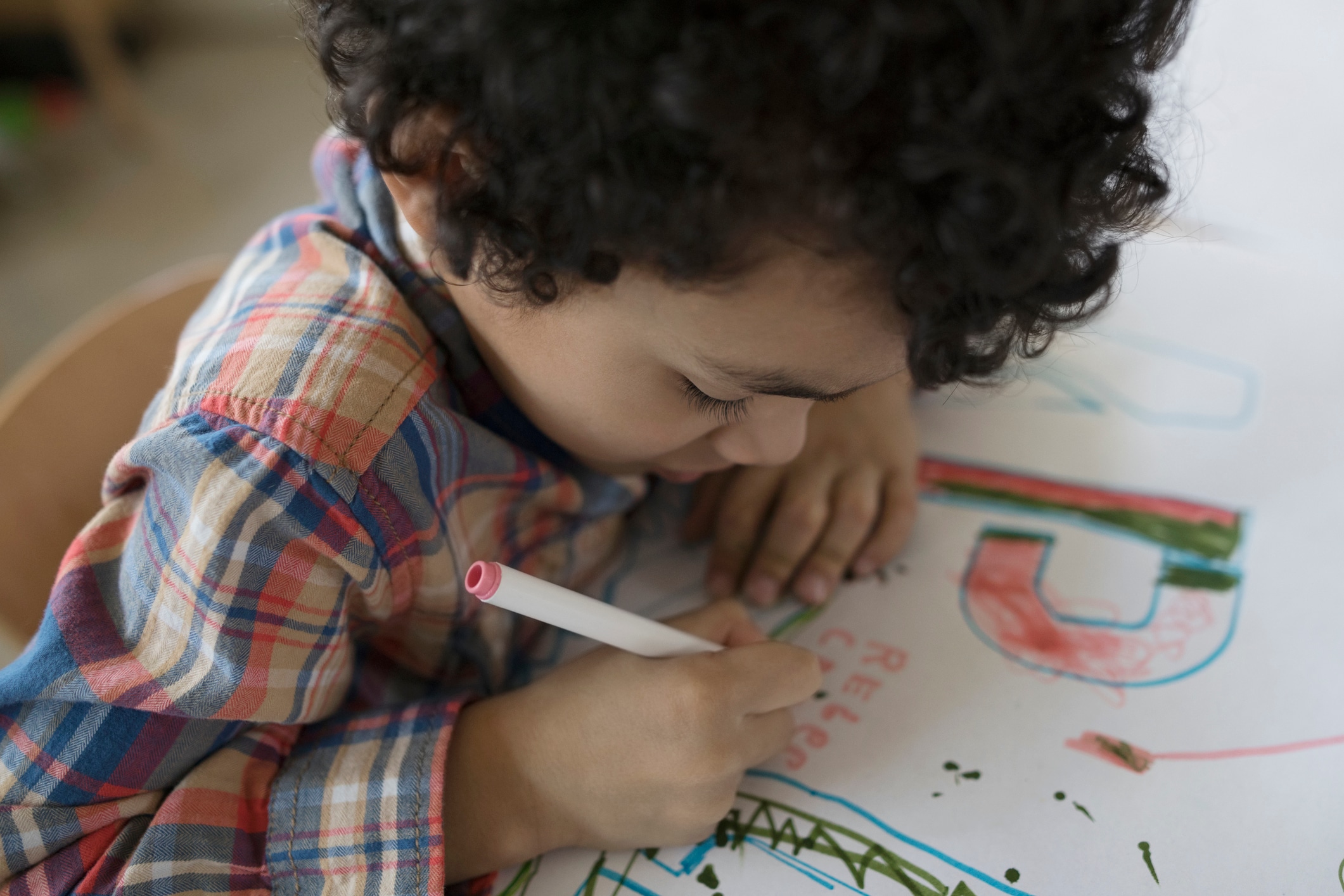For better or worse, a number of parenting styles have made their way onto moms’ and dads’ radars (and into their homes) over the years — attachment parenting, tiger parenting, free-range parenting and helicopter parenting, to name some of the latest trends. But currently, gentle parenting is having a moment (just check TikTok). Unlike many of its parenting technique predecessors, gentle parenting isn’t so much a detailed set of rules (such as babywearing or forgoing sleepovers), but instead a way parents and caregivers interact with their children.
“Gentle parenting at its core is an understanding of parenting as a unit with your child by creating healthy boundaries, natural consequences, no threats, no physical harm and encouraging positive reinforcement,” says Dr. Mona Amin, a pediatrician and Enfamil’s infant development expert. The result? A calmer, happier home.
“Gentle parenting at its core is an understanding of parenting as a unit with your child by creating healthy boundaries, natural consequences, no threats, no physical harm and encouraging positive reinforcement.”
— DR. MONA AMIN, PEDIATRICIAN
“Because of the strategies used in gentle parenting, parents will generally be less frustrated while dealing with their child’s inappropriate behavior, thereby strengthening their relationship with them,” explains Donna Whittaker, a conscious discipline trainer and vice president of curriculum and education at Big Blue Marble Academy.
Want to know more about gentle parenting strategies? Here’s what the experts say.
What is gentle parenting?
The term gentle parenting was originally coined by parenting author Sarah Ockwell-Smith in her 2016 book, “The Gentle Parenting Book: How to Raise Calmer, Happier Children From Birth to 7.” While there isn’t a specific set of rules for employing this method, according to Ockwell-Smith, the cornerstone of gentle parenting are the following tenets:
- Understanding.
- Empathy.
- Respect.
That being said, gentle parenting doesn’t mean kids call the shots and have carte blanche to do as they please. Instead, gentle parenting discipline encourages moms and dads to set appropriate boundaries in a respectful way while simultaneously acknowledging a child’s feelings (examples of this to come!).
“When parents and caregivers employ gentle parenting, they don’t use the threats, shame, negotiation and punishment used in typical discipline,” explains Whittaker. “Gentle parenting is when a parent or caregiver understands that children need someone to guide them toward appropriate behavior. They understand that little children feel big emotions and need to be taught healthy and appropriate ways to label, acknowledge and manage those emotions.”
“When parents and caregivers employ gentle parenting, they don’t use the threats, shame, negotiation and punishment used in typical discipline.”
— DONNA WHITTAKER, EARLY EDUCATION EXPERT
How to practice gentle parenting
Boundaries and understanding? What does it all mean?! Simply put: It’s treating and communicating with your child how you like to be treated yourself. (Would it be effective if your boss walked up to you and snatched your phone out of your hands because you were supposed to be working? No. Would it anger you? Absolutely.)
Here, Whittaker gives a few ways gentle parenting can be used (remember, nothing is set in stone, though!):
Tell kids what they can do, instead of what they can’t. “For example, instead of saying, ‘No climbing on the furniture!’ say, ‘Put your feet on the floor so that you are safe,’” Whittaker says. “Or, instead of saying, ‘Don’t throw blocks!’ say, ‘Blocks are for building. What are you going to build?’”
Replace negative behaviors with ones that are appropriate. “If you take something away from a child — the unwanted behavior — replace it with something appropriate by teaching a new skill,” she explains. “For instance, if a child pushes another child to get them to move, say: ‘When you want them to move, say ‘excuse me.’”
Avoid wishy-washy language. “Let children know your expectations and use assertive language to support this concept,” notes Whittaker. “Instead of saying, ‘Please put your shoes on.’ or ‘Put your shoes on, OK?’ which are requests giving children permission to opt out, say, ‘It is time to put your shoes on so we can go to the store. Are you able to put your shoes on by yourself or do you need my help?’”
Example gentle parenting scenarios: what to say instead
| Instead of this: | Say this: |
| No climbing on the furniture! | Put your feet on the floor so that you are safe. |
| Don’t throw blocks! | Blocks are for building. What are you going to build? |
| Stop pushing! | When you want them to move, say ‘excuse me.’ |
| Put your shoes on, OK? | It is time to put your shoes on so we can go to the store. Are you able to put your shoes on by yourself or do you need my help? |
| No throwing food! | I see you’re throwing food. We don’t throw food at the table. If you throw again, you’re done with your meal. |
Acknowledge and label your child’s emotions. “Young children are only able to feel one emotion at a time, unlike adults who are able to feel multiple emotions at once,” Whittaker says. “And their emotions are big and drive their actions. When a child is feeling big emotions, label and acknowledge them.”
“For instance, if your toddler is tantruming because they want to eat cookies for breakfast, you can empathize with them,” says Rachel Herbst, a pediatric psychologist at Cincinnati Children’s Hospital Medical Center. “Say: ‘You are so mad that you can’t have the cookies! You really want to eat cookies!’ This can help your toddler feel understood, which can help them calm down and stop tantruming — even though they didn’t get cookies for breakfast.”
“If your toddler is tantruming because they want to eat cookies for breakfast, you can empathize with them.”
— RACHEL HERBST, PEDIATRIC PSYCHOLOGIST
In other words, don’t gaslight your child or adopt a top-down authoritative approach (which most likely will backfire). While kids can be frustrating (and, well, annoying at times), having the consistent practice of briefly explaining where you’re coming from and respecting their feelings, you’re laying the groundwork for a healthy adult and more regulated child.
(Also, as Whittaker points out, “Children who simply hear ‘no’ all the time will simply say ‘no’ all the time.”)
Benefits of gentle parenting
Short-term, gentle parenting can lead to a more peaceful home. Long-term, positive parent-child bonds can contribute to happy, resilient adults. With that said, it’s important to note that gentle parenting, which is relatively new, isn’t the only way to foster a positive relationship with your child. In reality, there’s a good chance you’re practicing a number of different parenting techniques. However, experts agree that the guideposts of gentle parenting are beneficial.
“Gentle parenting can lead to a calmer home environment, which I do believe has a positive effect on the upbringing of children,” says Amin. “However, its principles can be used in various parenting styles if you do not fully follow the gentle parenting model.”
“Gentle parenting can lead to a calmer home environment, which I do believe has a positive effect on the upbringing of children. However, its principles can be used in various parenting styles if you do not fully follow the gentle parenting model.”
— DR. MONA AMIN, PEDIATRICIAN
Other potential benefits of gentle parenting include the following:
It helps parents and caregivers figure out and strengthen their values. “Gentle parenting gives caregivers an opportunity to lean into their values, such as preparing children to be successful in life,” says Herbst. “Parenting is hard, and we all wish we had a how-to book. Gentle parenting, which values consistency, can provide a framework to guide parents’ responses, especially when kids have big behaviors.”
It can contribute to academic success. “By providing a consistent, predictable response to challenges, the relationship between the caregiver and child is strengthened,” Herbst adds. “All of this aligns with what the research tells us – that strong caregiver-child relationships and emotional regulation are skills critical to academic achievement and other quality of life indicators.”
It helps kids self-regulate. “With gentle parenting, children will learn how to talk about and manage their emotions and be able to get their needs met in an appropriate manner,” Whittaker says. “Children will also be able to self-discipline. They will be able to control their impulses because of how their parents or caregivers provided them with tools to handle stressful situations.”
Fewer meltdowns. “Gentle parenting techniques can lead to a child who has less meltdowns, whose meltdowns are shorter and who feels safe to approach their parents with their feelings,” Amin says. “Most meltdowns occur due to a child’s desire to feel accepted, heard and to get the attention of a caregiver. By practicing more empathy throughout the day, your child will know they have your empathy and that they are seen for all of their emotions.”
Tips for sticking to boundaries while helping kids feel seen
Setting clear boundaries while validating your child’s (very real) feelings can feel a little bit like a tightrope act when you’re first figuring it out. Here’s a quick step-by-step for employing these seemingly-contradictory practices:
1. Pick — and state — your boundaries on the front end. Parenting off-the-cuff doesn’t always go so well, especially when you find yourself face-to-face with button-pushing behaviors. Figure out what you are and aren’t OK with before you speak and then stick to it. “The most important thing is to decide on your boundary before approaching your child and have a consistent and calm follow-through,” Amin says. “For example, if your 10-month-old is throwing food at the dinner table — your boundary is: No throwing of food. You need to calmly state the boundary when throwing is happening. ‘I see you’re throwing food. We don’t throw food at the table. If you throw again, you’re done with your meal.’”
2. Follow through. Amin goes on to explain that if they throw again, you can give them three strikes and if they continue to throw, you calmly take the food away. “Say: ‘I see you’re throwing food, and throwing food means you’re all done.’”
3. Validate. “If your child is upset with the boundary, verbalize and empathize with them,” Amin says. “You can even give them a hug, reiterating that the next meal will come when it’s time. By staying consistent with the boundary, having a calm follow-through and verbalizing and empathizing if they don’t like the boundary, you’re simultaneously holding healthy boundaries and understanding they may not love the boundary, but that it’s important.”
The bottom line
When it comes to parenting, everyone has their reasons for doing things their way. That said, when some of the tactics of gentle parenting are used, kids feel seen, which can both benefit your relationship with them and help curtail unwanted behavior.
Says Herbst: “While the caregiver is the adult who is responsible for developing structure and boundaries, kids can have feelings and reactions to situations, which are valid because that’s their experience of the world.”





